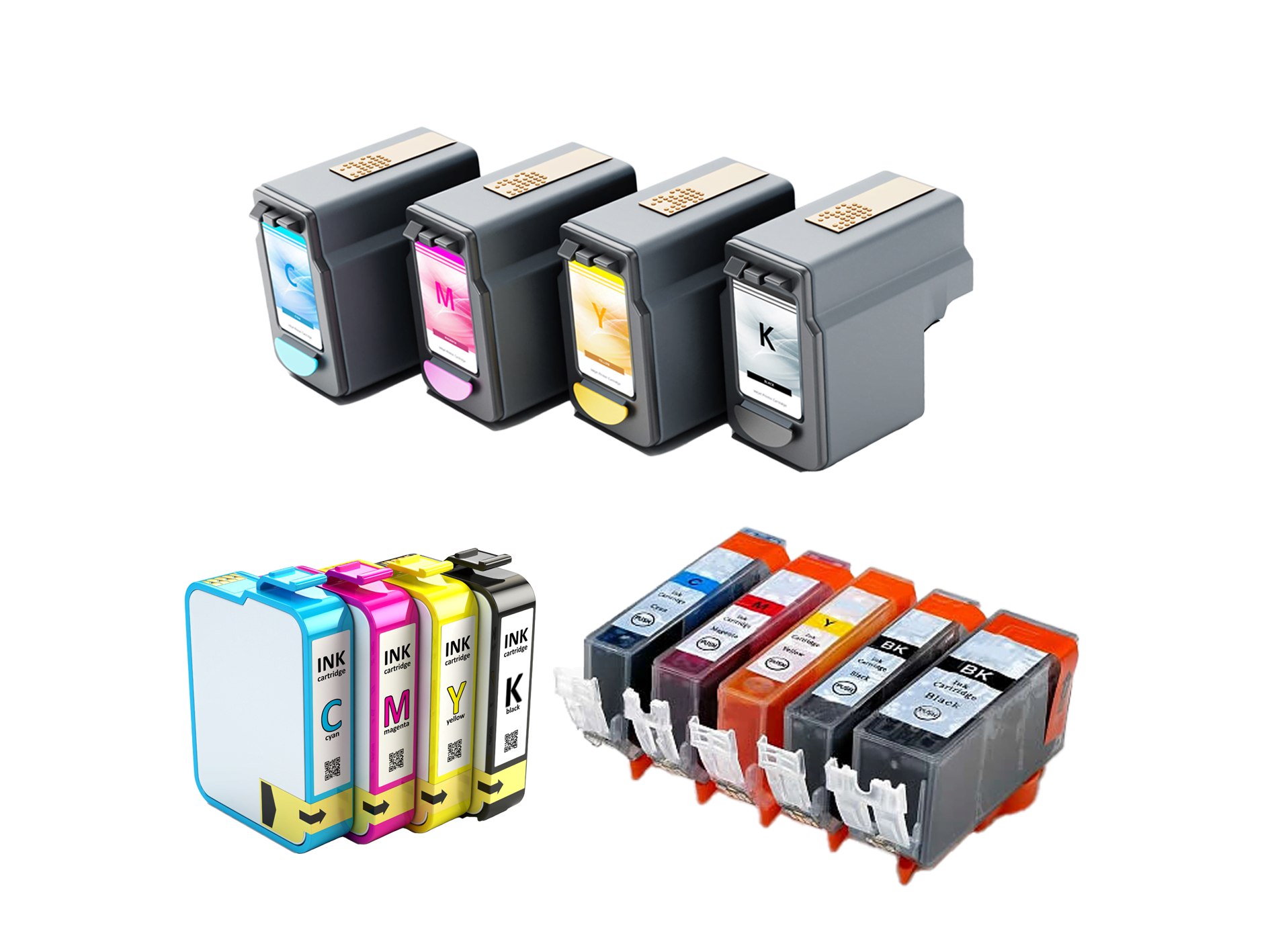Sustainable Printing: Did you know the average office worker uses 10,000 sheets of paper each year? That’s as much as one tree’s worth of paper. This shows how urgent it is for us to use sustainable printing. The global printing industry, worth over £400 billion, is now moving towards greener choices. Businesses and people are looking for new ways to cut down on their environmental harm.
eco-friendly printing, sustainable paper, green cartridges, printing tech
The printing world is changing fast, thanks to eco-friendly methods and green products. We’re seeing water-based inks and energy-saving printers. These changes are making printing better for our planet. In fact, using sustainable printing can cut down environmental harm by up to 47%.
In Singapore and around the world, people want products that are good for the environment. This means more demand for sustainable paper and green printing. It’s good for the planet and for businesses too. Going green can save money and make a brand look better.
Key Takeaways
- The average office worker uses 10,000 sheets of paper annually, equivalent to one tree.
- Eco-friendly printing can reduce environmental impact by up to 47%.
- Sustainable paper options and green cartridges are gaining popularity.
- Implementing green printing practices can lead to significant cost savings.
- Adopting sustainable printing enhances brand image and helps meet environmental regulations.
- Double-sided printing can reduce paper usage by 50%.
Understanding the Evolution of Eco-friendly Printing, Sustainable Paper, Green Cartridges, Printing Tech
The printing industry has changed a lot in recent years. It’s now more focused on being eco-friendly. This change is due to growing worries about the environment and people’s desire for sustainable products.
The Environmental Impact of Traditional Methods
Old printing ways use a lot of resources and create a lot of waste. In Europe, 80% of printed stuff is paper. This shows how much the industry depends on paper. It also uses a lot of energy and creates harmful chemicals.
Global Shift Towards Sustainable Solutions
The global printing industry is worth over $400 billion and uses more sustainable materials. This change is because of what consumers want. About 55% of shoppers are willing to pay more for products that are good for the planet.
Companies are using double-sided printing to use less paper. They’re also using energy-saving printers to cut costs.
Current Market Trends and Innovations
Digital printing is making commercial printing greener. It can cut waste by up to 10%. More paper is being recycled, with about 68% recycled in 2022.
People are starting to use sustainable paper like bamboo and hemp. These need less water and energy to make than regular paper.
| Eco-friendly Practice | Environmental Benefit | Cost Benefit |
|---|---|---|
| Double-sided printing | 50% reduction in paper use | Lower paper costs |
| Digital printing | Up to 10% waste reduction | Reduced material waste |
| Recycled paper use | Conservation of virgin resources | Competitive Pricing |
| Eco-friendly inks | Less hazardous waste | Higher yield per pound |
Essential Components of Green Printing Practices
The printing industry is changing to be more eco-friendly. This change is due to environmental worries and customer demand. Green printing uses many strategies to lessen environmental harm and support sustainability.
Water-based and Soy-based Ink Solutions
Eco-friendly inks are key in green printing. Water-based and soy-based inks give bright colours without harmful substances, and they are better for the environment than traditional inks.
Energy-efficient Equipment and Technologies
New print technologies use less energy. LED UV printing, for example, uses 90% less energy than old methods. This not only saves money but also cuts down on carbon emissions.
Waste Reduction and Management Strategies
Good waste management is vital in green printing. Recycling paper and ink cartridges saves resources and cuts landfill waste. Tools like Metrix can also improve print layouts, cutting paper waste by up to 40%.
green printing practices
Advanced Cartridge Options and Recycling
Today’s cartridge options are more sustainable. HP’s Original Ink and Toner cartridges use recycled materials, helping the environment. Services like HP Instant Ink ensure you always have ink and help with recycling.
| Green Practice | Impact |
|---|---|
| Recycling 1 tonne of paper | Saves 17 trees, 7,000 gallons of water |
| Double-sided printing | Cuts paper usage by 50% |
| Using the printer’s draft mode | Reduces ink consumption |
The printing industry is really committed to being green. In 2023, 59% of companies started using sustainable materials. This not only helps the planet but also attracts customers who care about the environment. It’s a win-win, with 55% of people ready to pay more for eco-friendly brands.
Digital Transformation in Sustainable Printing
Digital printing is changing the printing world for the better. It uses eco-friendly methods that help businesses reduce waste. This new technology is a big win for companies wanting to be kinder to the planet.
Digital printing cuts waste by up to 10% compared to old methods. It lets businesses print only what they need, avoiding too much waste. It also saves time and resources, making it a greener choice.
Digital printing also means you can make things just for you. For example, The Print Authority has helped clients save £24,000 annually. This shows how digital printing can save money and be good for the environment.
| Aspect | Traditional Printing | Digital Printing |
|---|---|---|
| Waste Reduction | Higher waste | Up to 10% less waste |
| Energy Consumption | Higher energy use | Lower energy consumption |
| Setup Time | Longer setup | Quick setup |
| Personalisation | Limited options | Extensive personalisation |
As more businesses focus on being green, digital printing is key. It helps companies reduce their impact on the environment. These new, green printing methods can make businesses more efficient and eco-friendly.
Certification Standards and Paper Choices
The printing industry is moving towards sustainability. This is thanks to new certification standards and eco-friendly paper options, which will make printing more environmentally friendly in the future.
FSC Certification and Its Importance
FSC certification is key for responsible forest management. Companies like Whitehall Printing have been FSC® certified for 15 years, showing a strong commitment to sustainable practices.
By using FSC-certified papers, businesses help ensure their paper comes from sustainable sources. This includes well-managed forests, recycled materials, and controlled sources.
Sustainable paper choices
Post-consumer Waste Paper Options
Recycled paper is a big part of eco-friendly printing. HP’s Original Ink and Toner cartridges are made from recycled materials, supporting sustainable printing.
Choosing recycled paper certified by groups like the FSC helps. It promotes responsible forest management and reduces landfill waste.
Tree-free Alternative Materials
New tree-free paper alternatives are being developed. These include materials from hemp or recycled organic cotton. They offer businesses more ways to reduce their environmental impact.
These eco-friendly materials are great for on-demand printing and advanced printing techniques. They help businesses print more sustainably.
Sustainable Sourcing Practices
Sustainable sourcing is becoming more important. Companies like Whitehall Printing are leading the way. They recycle 100% of their paper off-cuts and overs.
They also use vegetable-based inks for lithographic work and offer carbon-balanced papers. These practices, along with sustainable inks and paper, make printing more eco-friendly.
| Sustainable Practice | Environmental Impact |
|---|---|
| Double-sided printing | Reduces paper consumption by up to 50% |
| FSC-certified paper | Ensures responsible forest management |
| Recycled ink cartridges | Reduces plastic waste |
Conclusion
The move towards sustainable printing is changing the game for eco-friendly businesses in Singapore. Choosing sustainable paper cuts down on carbon emissions and saves money. Using recycled, bamboo, or FSC-certified paper helps save resources and meets corporate social responsibility goals.
Green printing technology is leading the way. Energy-saving printers like UV and Latex models use less power and get government help. Soy and vegetable inks are better for the environment because they release fewer harmful chemicals. These steps, along with smart layout software, help use less paper and ink.
For greener printing, start by making duplex printing the default. This cuts paper use in half. Printing in draft mode also saves ink and resources. Using multifunction printers with eco-modes boosts sustainability efforts. By doing this, businesses can protect the environment and save money.
FAQ
What are some sustainable printing practices I can adopt?
You can start by using recycled or sustainably sourced paper, opting for double-sided printing to save on materials, and choosing eco-friendly ink options. Implementing these tips can drastically reduce the environmental impact of printing.
What are the benefits of sustainable printing?
The benefits of sustainable printing include reduced waste, lower energy consumption, and a smaller carbon footprint. Plus, it often leads to cost savings in the long run and can enhance your brand’s image as environmentally friendly.
How can I choose eco-friendly printing solutions for my business?
Look for printing companies that specialize in eco-friendly printing practices. Check if they use sustainable materials and energy-efficient printing technology and offer on-demand printing options to minimize waste.
What types of printing materials are considered eco-friendly?
Eco-friendly printing materials include recycled paper, sustainably sourced paper, and biodegradable inks. These materials help reduce the environmental impact of printing while still delivering quality results.
How does digital printing contribute to sustainability?
Digital printing is often more sustainable because it uses less energy and generates less waste than conventional printing. It also allows for on-demand printing, which means you can print only what you need, reducing excess inventory.
What are some tips for implementing green printing in my operations?
Assess your current printing process and look for ways to reduce waste. Use sustainable printing paper, recycle old cartridges, and consider switching to energy-efficient printing technologies. Training staff on eco-friendly practices can also make a big difference.
How can I reduce the environmental impact of my printing needs?
To reduce the environmental impact of printing, you can use sustainable printing methods, choose eco-friendly materials, and regularly maintain your printers for efficiency. Also, try to limit unnecessary prints and embrace digital alternatives when possible.
Are there any advanced printing technologies that are eco-friendly?
Advanced printing technology with eco-friendly practices includes options like water-based inks, energy-efficient printers, and systems that produce less waste. These innovations can significantly improve your printing efficiency while benefiting the environment.
What role do ink cartridges play in sustainable printing?
Ink cartridges can have a big impact on sustainability. Opting for refillable cartridges or those made from recycled materials can help reduce waste. Additionally, recycling your used cartridges can further minimize the environmental impact of printing.
As highlighted in The Rise of Sustainable Paper Options: A Guide to Eco-Friendly Printing, advancements in eco-friendly paper and cartridge technologies pave the way for greener practices. By embracing sustainable materials and technologies, businesses and individuals can contribute to a healthier planet without compromising productivity or creativity.
























 Other
Other




